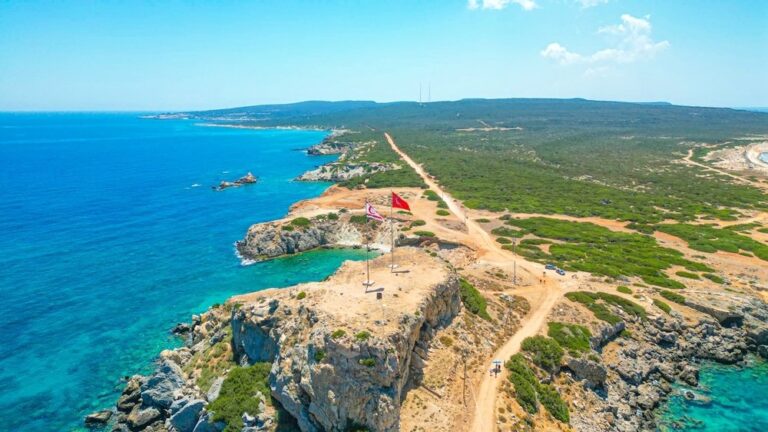Turkish tea is world famous and one of the favorite hot beverages Turks consume several times a day. It is domestically produced with the largest growing area in the Black Sea city of Rize. According to the Ministry of Agriculture and Forestry’s latest accessible data, Turkey is the sixth largest tea producer globally. However, its export is negligible compared to the rest of the producer countries, as most of the tea is consumed domestically.
Contrary to what many would now expect, Turkish tea’s history does not stretch far. The Turks first had tea in Anatolia only toward the end of the 19th century under Ottoman rule when importers opened the first tearooms in Istanbul. After tea had become popular in the empire, the Ottomans wanted to grow it themselves, so in the fin de siecle, Sultan Abdülhamid II got appropriate seeds from China cultivated in the city of Bursa near the then capital Istanbul. However, these efforts failed due to unsuitable ecological conditions in the region. After the collapse of the Ottoman Empire and the formation of modern Turkey, the founder of the republic, Mustafa Kemal Atatürk, initiated renewed steps to cultivate tea in Turkey. So, in the 1930s, after a corresponding legislative decree in 1924, tea plantations were established in Rize, which have developed into a major industry for the region to this day and have made Turkey famous for its tea.
Coffee and Turks
Another hot beverage with a long history in Turkey than tea but deserves less attention is coffee. Even though traditional Turkish coffee is widely consumed in the country, coffee is unfortunately not cultivated in Turkey – despite being a social drink par excellence and an international trendsetter with roots in the Ottoman Empire. With the conquest of Yemen by the Ottomans in the early 16th century and the opening of the first coffee house in Istanbul half a century later, coffee gradually spread to three continents and became the quintessential Turkish hot beverage. Notwithstanding, unfortunately, today, coffee is associated more with Italy than with Turkey. It was not until the 17th century that Italians and Europeans first came into contact with coffee, when it was imported from the Ottoman Empire via Venice and Marseilles, which, together with the Turkish fashion of the time, created a hype among the Western European nobility.
However, the real boom in Europe came with the end of the Ottoman siege of Vienna, after the Ottomans left behind several hundred sacks of coffee, giving rise to the now world-famous coffeehouse culture in Vienna, which from then on captivated the entire European continent. With the creativity of the Italians, over time, the traditional Austrian Kapuziner coffee became the cappuccino, followed by many other Italian variants such as the espresso. As the range of Italian coffees has expanded over the years, the hot beverage is now more commonly associated with Italy than Austria around the world. Thanks to its stimulating effect, coffee was declared the drink of the enlightenment in the 18th century. Since then, it has been impossible to imagine daily life in Europe without it.
Yet the tragic part of the story is that despite the global perception, coffee is neither Austrian nor Italian, but as stated above, Turkish! Therefore, it is now time to reconnect coffee as an original Ottoman hot beverage with its homeland. After all, as the descendants of the Ottomans, the Turks more than owe this to their ancestors! Moreover, restoring such an association should not be difficult since, following the example of tea cultivation in the Black Sea region, it is reasonable to conclude that coffee will experience a resurgence through cultivation in Turkey – domestically and abroad.
As there is the coffee Arabica and Robusta, there can also be the coffee Turca, which can be sold as beans or exported and thus processed to the Italian espresso or directly offered as a ready traditional Turkish mocha. Consequently, after five centuries with Turkish fashion also widespread today, thanks to Turkish TV series, coffee Turca can conquer the West and the world again.
In addition, coffee cultivation could have other effects, such as tourism. Just as tourists can walk through the beautiful tea plantations in Rize, coffee lovers could walk through coffee-growing areas while enjoying freshly ground hot brews. Who would say no to that? It is also important from an environmental perspective that by growing coffee in Turkey, coffee could be consumed domestically and in Europe with fewer emissions, as distances would be shorter and imports from Africa or Latin America could decrease. Furthermore, by exporting coffee, Turkey can save on import costs while improving its trade balance – all while lowering the price of coffee for the end consumer.
But many will probably now ask themselves: Is coffee cultivation at all possible in Turkey? Entering a corresponding search term in Google, one will quickly notice that the specific cultivation area, the so-called Coffee Bean Belt, is located around the equator. But as with tea, which usually thrives in the tropics, research was conducted before the pandemic to determine if coffee could be grown in Turkey, and it was found to be possible in the provinces of Mersin and Antalya in the Mediterranean region. The Toroslar Municipality in Mersin and a farmer named Yaşar Dağtekin in Antalya, who moved to Turkey from Germany for this purpose, have even already harvested the first coffee beans proving that the Mediterranean region can be what the Black Sea region is to tea. However, to enable coffee cultivation to develop into an industry, there is a need for state support now, as was the case with tea at the time of the republic’s founding.




